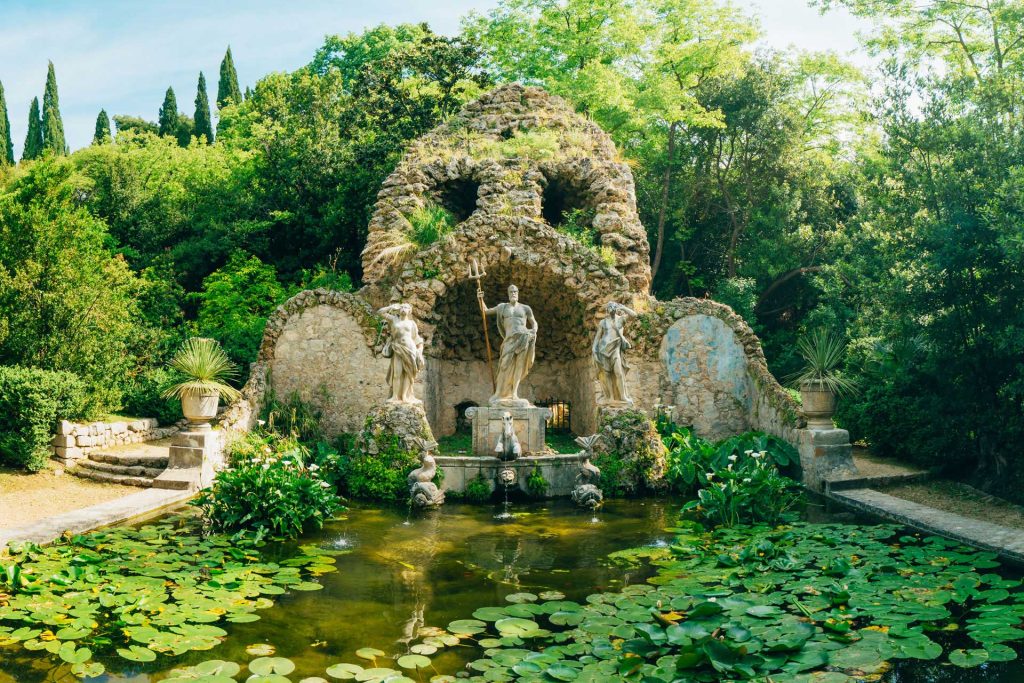
The Gardens of Dubrovnik
“Traveler, behold the traces of human hands, whose excellent skills have tamed the wildness of nature.”
Inscription from 1502, engraved in stone in Trsteno Arboretum
As you step inside the elegant 14th-century cloister of the Franciscan monastery in the old town, a large painting hung on a side wall immediately stands out. It is one of the rare portrayals of the town before the Great Earthquake, a 1667 life-shattering event that altered the local landscapes and the course of history with brute force. Today, the painting provides valuable insights about what Dubrovnik looked like in its earliest days.
Like a tightly knit, grid-like puzzle, the walled medieval city sat jam-packed with residences so that it would shelter as many people as possible inside the safety of its defenses. Green spaces were confined exclusively to monasteries and convents, like the Benedictine Convent of St. Mary of the Castle, perched high up on the southern rocks, or inside the Franciscan Monastery cloister, a garden that still today mesmerizes with majestic rose bushes and fragrant citrus trees.
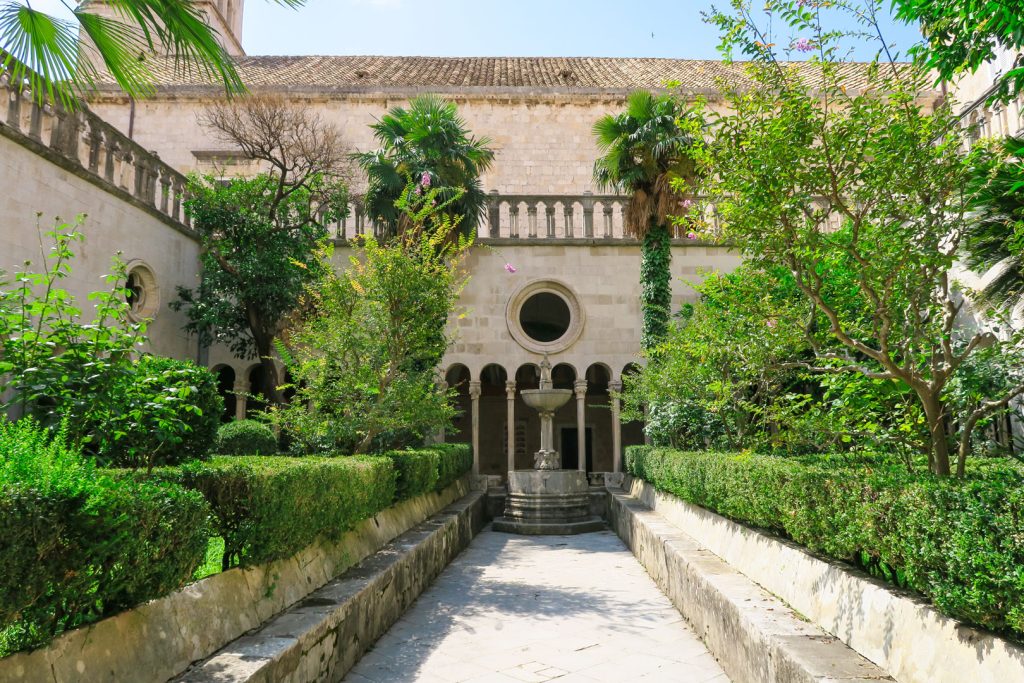
With Renaissance came Dubrovnik’s golden era, a time of thriving business and consequent affluence. To find refuge from the summer heat, both aristocrats and merchants started building summer estates outside of the walled city. Poised mainly by the water, in places like the banks of Rijeka Dubrovačka, Gruž, the Elafiti islands and the hamlet of Trsteno, their spacious but simple villas were surrounded by lush gardens; that which was unimaginable inside the walls became true luxury.
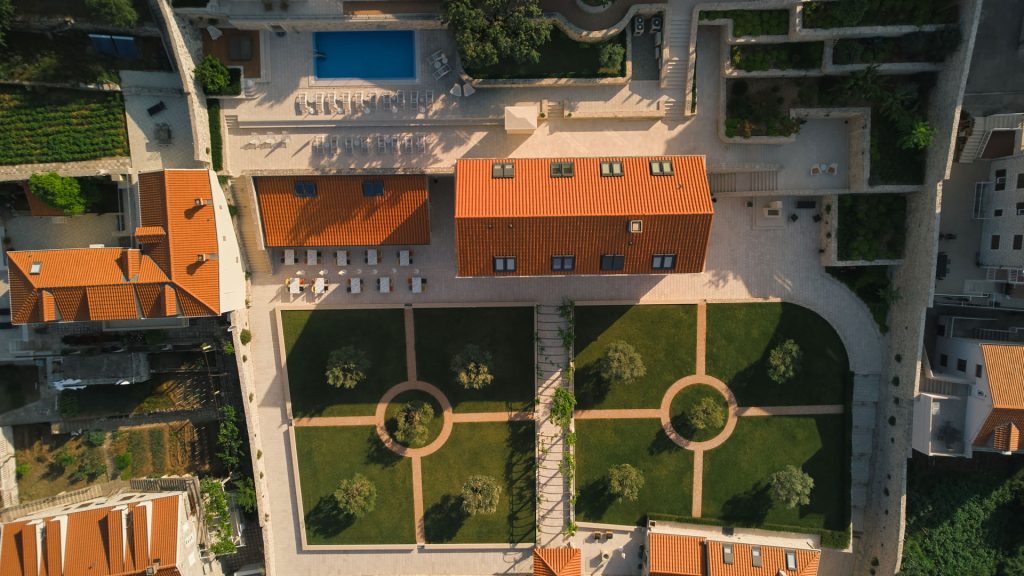
The Renaissance gardens elsewhere typically took on a geometrical layout, but in Dubrovnik they often had to adapt to the rugged terrain and meandering property borders. To overcome steep slopes, many were laid out in terraces, doci [do-tsee] as they are locally called, supported by stone walls. Stone, the main local building material, was also used for decorative elements, from stone benches and tables scattered throughout, to ornamented crowns of wells, massive flowerpots, as well as fountains, like the one in Palace Natali gardens.
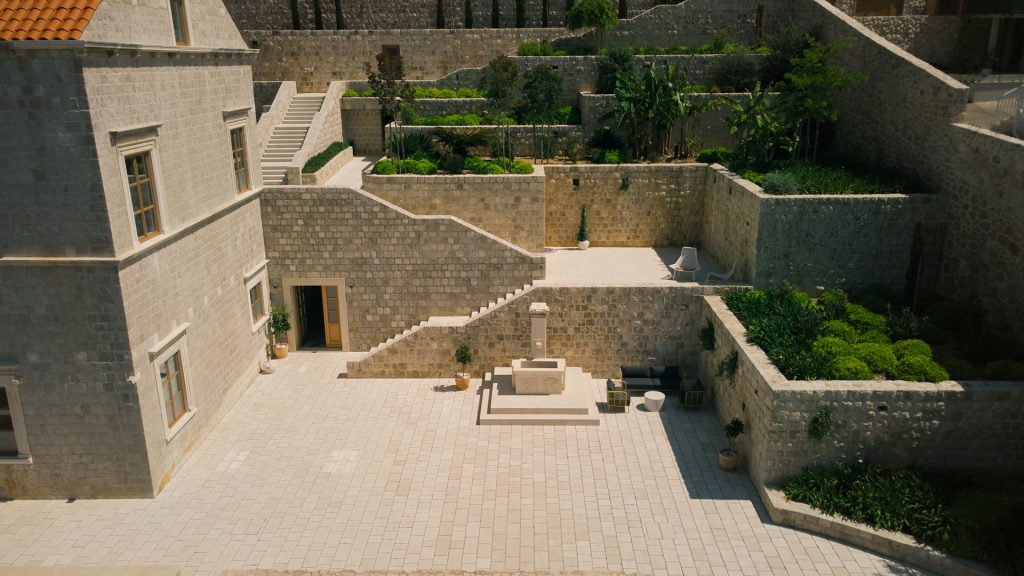
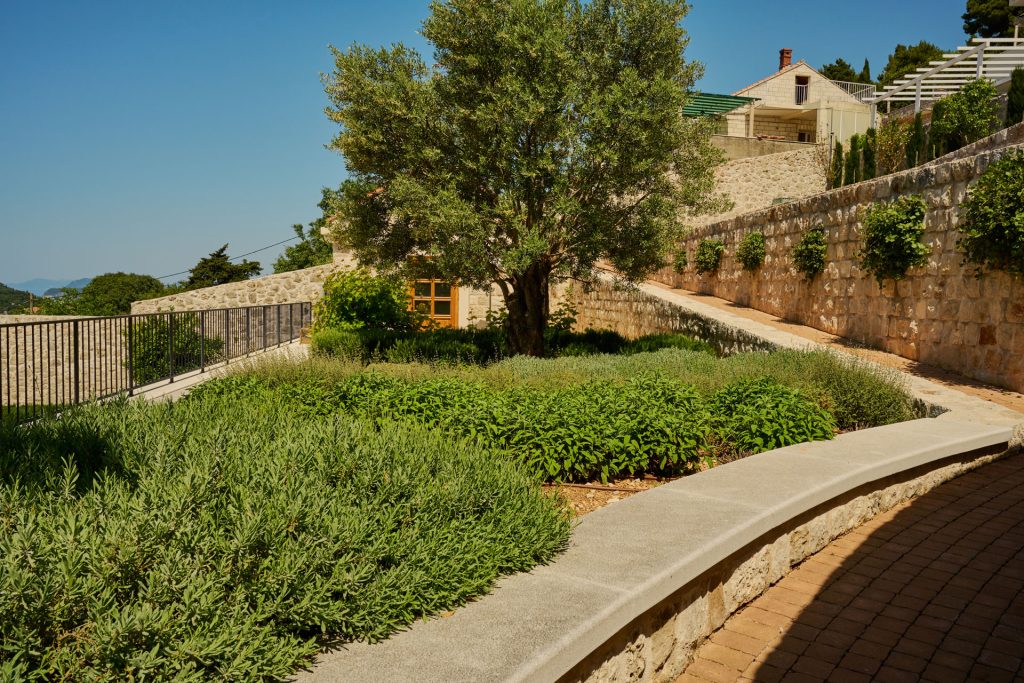
Perhaps the most distinctive trait of Dubrovnik’s gardens was the central promenade, shaded by vines grown on a pergola, a structure of wooden beams supported by a stone colonnade on both sides. Close to the house, this scenic and cool area provided a place for outdoor dining but also strolls that inspired quality leisure, artistic thoughts, and intellectual discussions. Like at many other estates, the promenade at Palace Natali leads out to the glorijet, a roofed pavilion that features stunning vistas and oozes calm.
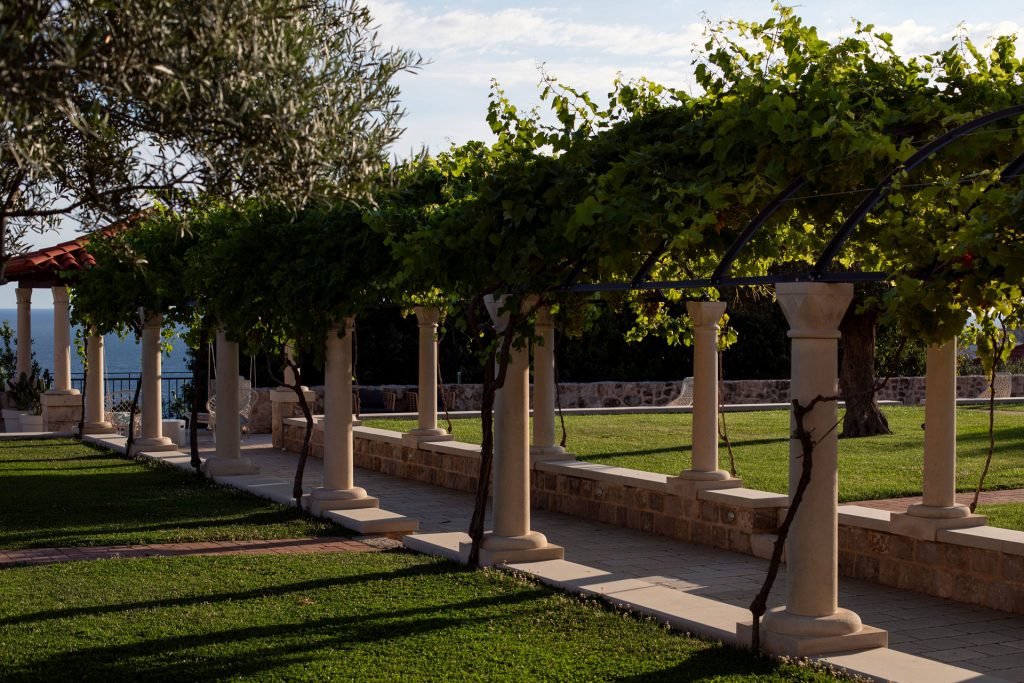
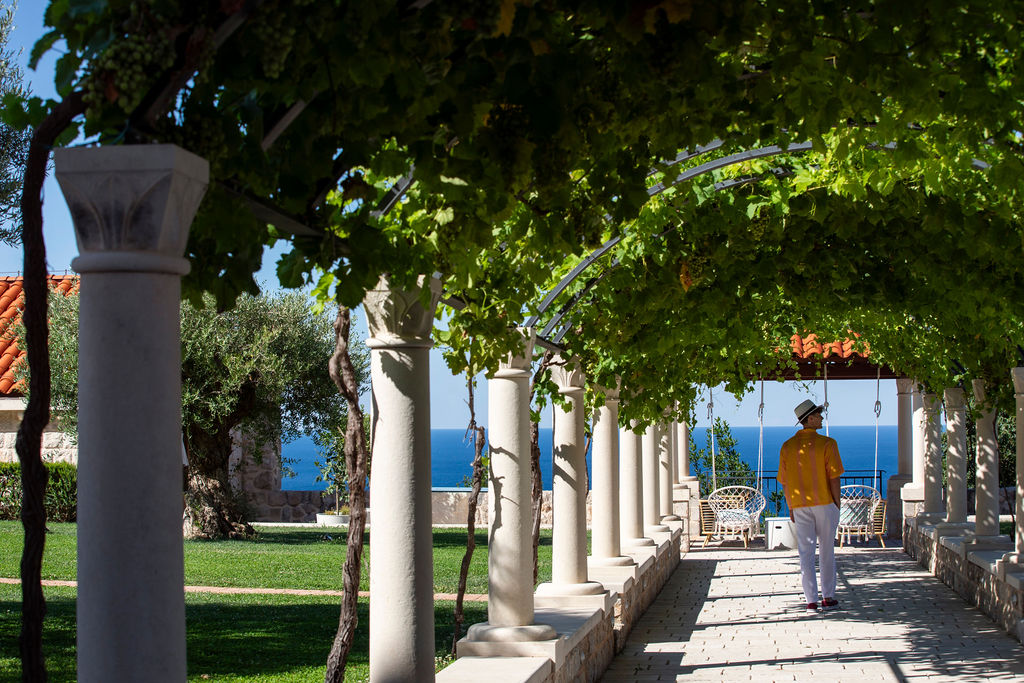
Often found by the glorijet was one of the region’s favorite trees, the fragrant and decorative Dubrovnik bitter orange, whose fruits are used to make arancini candied orange peels and bitter orange marmalade. Other trees commonly found were also useful, like pomegranates, almonds, olives, carobs, and citruses; sculptural pieces, like cypresses and palms, were often planted close to property boundaries like an eye-catching treat for passersby. Shrubs included the likes of myrtle, strawberry trees, rosemary, lavender, and herbs. Among the flowers, perhaps the most famous remains Rosa centifolia, also known as the cabbage rose, the main ingredient in the traditional rose liqueur, rozulin.
Some of these Renaissance gardens can still be spotted at the preserved summer estates, including the one at Palace Natali. Nowadays, there are also more gardens inside the old town, as after the Great Earthquake some of the ruins were filled in with earth and turned into gardens. But to witness the full splendor of Dubrovnik’s Renaissance gardens, one must head to Trsteno and visit the Arboretum. Originally the summer estate of the Gučetić-Gozze family from the 15th century, today these lush gardens occupy 25 hectares of land and showcase hundreds of plants, from indigenous to exotic, like ginkgo, Chinese black bamboo, American linden and others. There, in that breezy space, one can truly grasp this need of men to tame wilderness with their hands and create natural oases that inspire and feed the body, mind, and soul.
